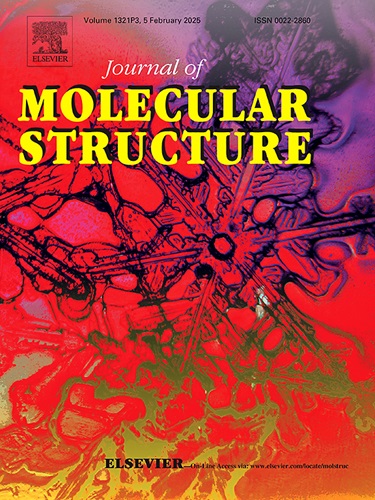Synthesis of copper-based Fenton-like catalyst (Cu/HAP-sBC) for oxidative degradation of p-nitrophenol in aqueous solution
IF 4
2区 化学
Q2 CHEMISTRY, PHYSICAL
引用次数: 0
Abstract
p-Nitrophenol (PNP), a persistent phenolic pollutant with endocrine-disrupting and carcinogenic properties, poses substantial risks to aquatic ecosystems and human health. To address the limitations of conventional Fenton processes (e.g., sludge generation, acidic pH dependency), we developed a novel copper-impregnated hydroxyapatite-biochar composite catalyst (Cu/HAP-sBC) through ion-exchange stabilization and carbon matrix integration. Comprehensive characterization (SEM, BET, XRD, FTIR, XPS) demonstrated the hierarchical porous structure with a high specific surface area (271.5 m2/g) and homogeneous Cu dispersion, while the synergistic HAP-biochar interface effectively minimized metal leaching. Under optimized conditions (2.0 g/L catalyst, 50 mg/L PNP, 50 mM H2O2, pH 7.0, 25 °C), Cu/pHAP-sBC achieved 96.41 % PNP degradation within 60 min through adsorption-catalysis synergy. Mechanistic studies using EPR and LC-MS revealed hydroxyl radical (·OH)-driven stepwise degradation pathways, involving intermediates such as p-nitrocatechol and p-benzoquinone. This study pioneers a sustainable remediation strategy by synergistically utilizing renewable biochar and waste-derived hydroxyapatite, offering a sludge-free, pH-flexible alternative to traditional Fenton-like system for organic pollutant removal.

求助全文
约1分钟内获得全文
求助全文
来源期刊

Journal of Molecular Structure
化学-物理化学
CiteScore
7.10
自引率
15.80%
发文量
2384
审稿时长
45 days
期刊介绍:
The Journal of Molecular Structure is dedicated to the publication of full-length articles and review papers, providing important new structural information on all types of chemical species including:
• Stable and unstable molecules in all types of environments (vapour, molecular beam, liquid, solution, liquid crystal, solid state, matrix-isolated, surface-absorbed etc.)
• Chemical intermediates
• Molecules in excited states
• Biological molecules
• Polymers.
The methods used may include any combination of spectroscopic and non-spectroscopic techniques, for example:
• Infrared spectroscopy (mid, far, near)
• Raman spectroscopy and non-linear Raman methods (CARS, etc.)
• Electronic absorption spectroscopy
• Optical rotatory dispersion and circular dichroism
• Fluorescence and phosphorescence techniques
• Electron spectroscopies (PES, XPS), EXAFS, etc.
• Microwave spectroscopy
• Electron diffraction
• NMR and ESR spectroscopies
• Mössbauer spectroscopy
• X-ray crystallography
• Charge Density Analyses
• Computational Studies (supplementing experimental methods)
We encourage publications combining theoretical and experimental approaches. The structural insights gained by the studies should be correlated with the properties, activity and/ or reactivity of the molecule under investigation and the relevance of this molecule and its implications should be discussed.
 求助内容:
求助内容: 应助结果提醒方式:
应助结果提醒方式:


